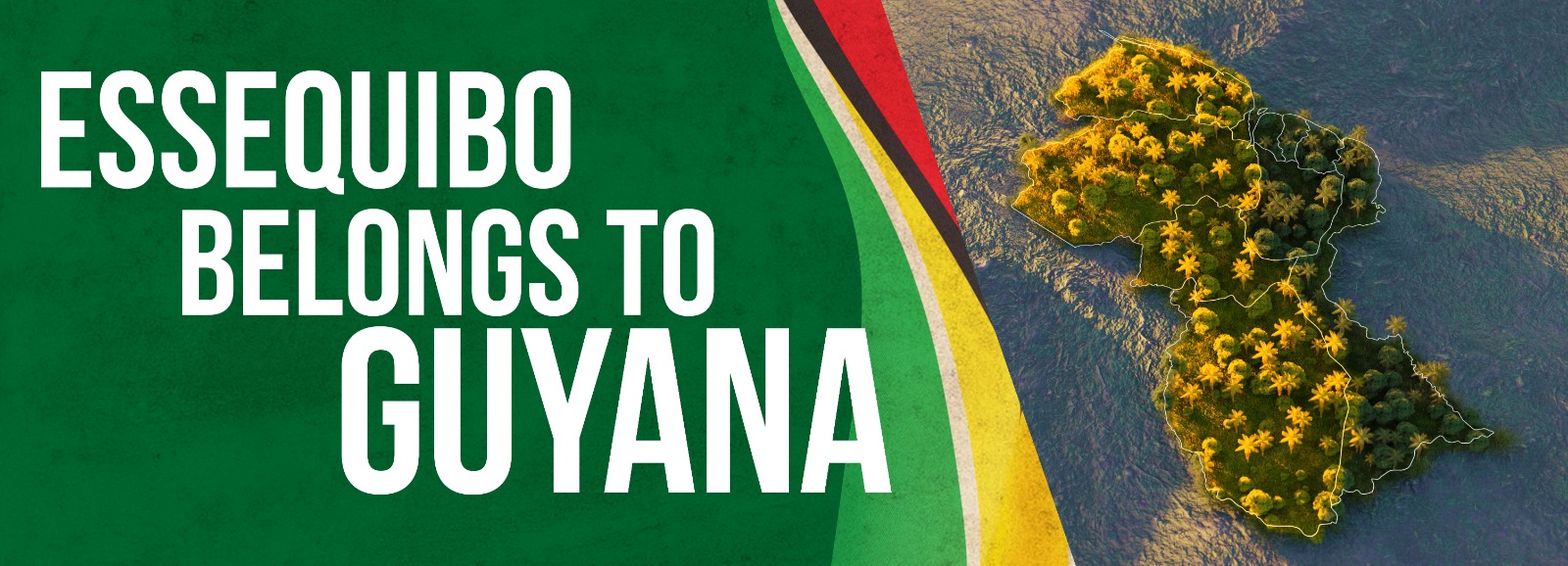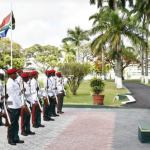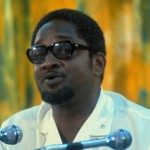
President Donald Ramotar left Guyana on Saturday for South Africa to attend the official state memorial service of former South African President Nelson Mandela.
The President signed the Book of Condolence for the late anti-apartheid leader, icon and Former President of South Africa, Nelson Mandela before leaving the country.
First Lady Deolatchme Ramotar also signed the Book of Condolence.
Mandela, who became one of the world’s most beloved statesmen and a hero of the 20th century when he emerged from 27 years in prison to negotiate an end to white minority rule in South Africa, was 95 when he died on December 4.
In a message to the nation on Thursday, President Ramotar described Mandela’s passing as a “loss not just one for the people of South Africa, but for Africa as a whole, and the world at large. Nelson Mandela was a giant in defence of human rights and for a free and just society, not only for his beloved South Africans, but for the oppressed the world over”.
Mandela died of complications from a recurring lung infection. The Nobel Peace Prize Laureate was a symbol of reconciliation for a country with a brutal history of racism. He was released from prison in 1990 after nearly 30 years for plotting to overthrow South Africa’s apartheid government.
In 1994, in a historic election, he became the nation’s first black president of South Africa, where he brought about a peaceful transition from the white-dominated government to a multi-racial democracy. Mandela stepped down in 1999 after a single term and retired from political and public life. His death closed the final chapter in South Africa’s struggle to cast off apartheid, leaving the world with indelible memories of a man of astonishing grace and good humour.
Born in 1918 in the village of Mveso in Transkei, South Africa, Nelson Rolihlahla Mandela was the son of a tribal chief in Transkei, one of the future “Bantustans” independent republics set up by the apartheid regime to cement the separation of whites and blacks.
Growing up at a time when virtually all of Africa wa under European colonial rule, Mandela attended Methodist schools before being admitted to the black University of Fort Hare in 1938. He was expelled two years later for his role in a student strike. He moved to Johannesburg and worked as a policeman at a gold mine, boxed as an amateur heavyweight and studied law. Mandela began his rise through the anti-apartheid movement in 1944, when he helped form the ANC Youth League.
He was arrested in 1962 and sentenced to five years’ hard labour for leaving the country illegally and inciting blacks to strike. A year later, police uncovered the ANC’s underground headquarters on a farm near Johannesburg and seized documents outlining plans for a guerrilla campaign. At a time when African colonies were one by one becoming independent states, Mandela and seven co-defendants were sentenced to life in prison.
In 1973 Mandela refused a government offer of release on condition he agrees to confine himself to his native Transkei. In 1982, he and other top ANC inmates were moved off Robben Island to a mainland prison. Three years later, Mandela was again offered freedom, and again he refused unless segregation laws were scrapped and the government negotiated with the ANC.
On February 11, 1990, inmate No. 46664, who had once been refused permission to leave prison for his mother’s funeral, went free and walked hand-in-hand with Winnie, his wife. Blacks across the country erupted in joy — as did many whites. (GINA)
















6 Responses to "President Ramotar to attend Nelson Mandela’s funeral"
You must be logged in to post a comment Login